The 74HC4051 Mux (spec is here: http://www.nxp.com/documents/data_sheet/74HC_HCT4051.pdf)
has 8 input/output pins labelled Y, one output/input pin labelled Z, three digital selectors S0, S1, S2, and an active-low enable pin E (bar).
That all seems perfectly reasonable. There is also Vee which is labelled "supply voltage"
To test the mux, we set S0 = S1 = S2 = E = 0V Then we set Y0 = 3.3V, then 0V
Taking The documenation at face value we set Vee = Vcc = 3.3V When Y0 = 3.3V, Z = 3.3V, which seems reasonable. But then when Y0 = 0V, Z = 1.4V???
If we set Vee = 0V, this does not happen, but why is it labelled supply, and if it's ground, why is it needed at all?
